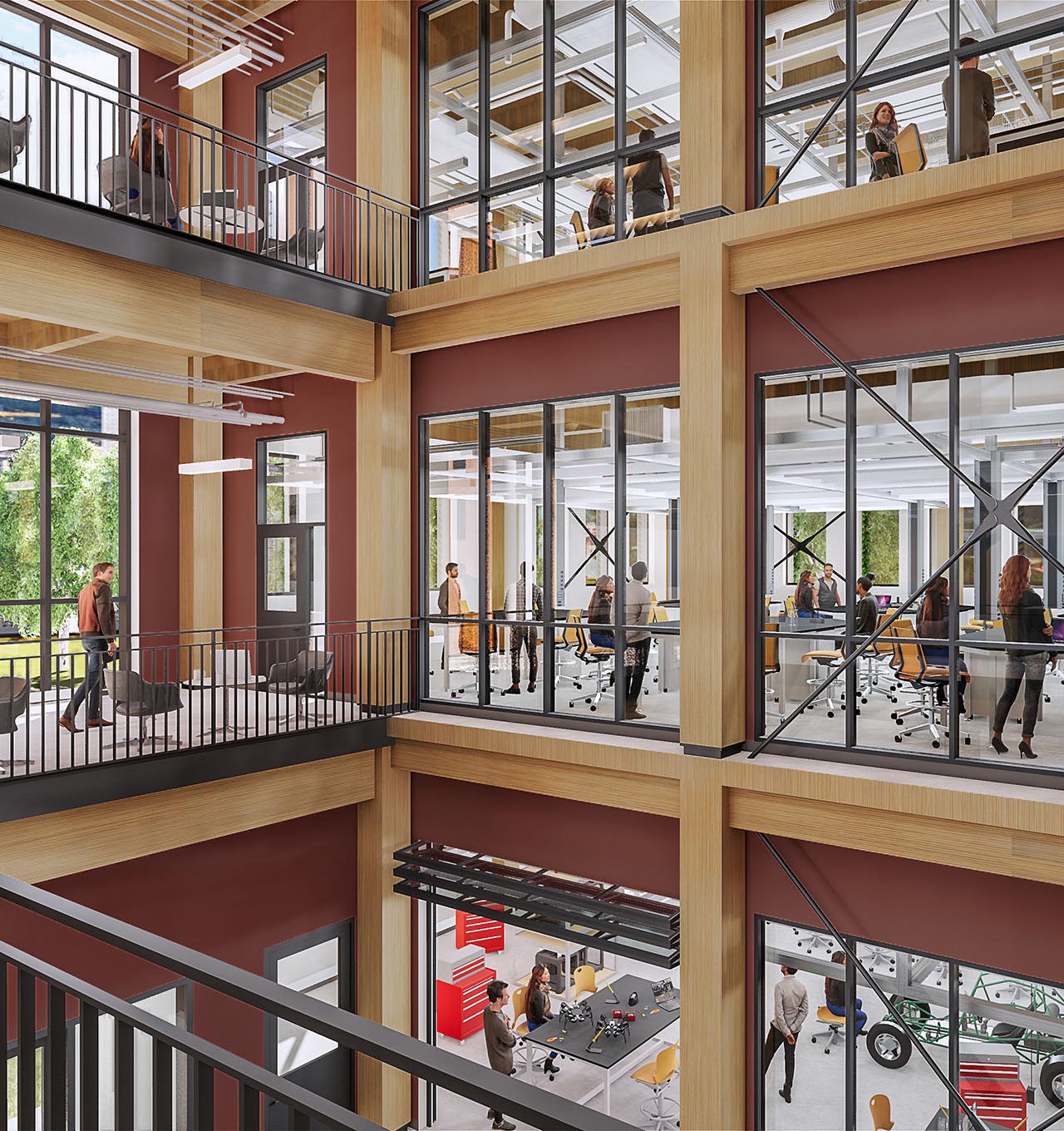Mass Timber Construction
Sequestering Carbon
Michigan State University
STEM Complex
East Lansing, Michigan
A Cross-Laminated Timber (CLT) structure offers ecological, practical, and regulatory advantages unmatched by steel including carbon sequestration, speed of production, and inherent fire protection. Fabricated from a rapidly renewable resource, CLT, while naturally sequestering CO2, is a carbon-neutral system once installed, when accounting for the energy required for its manufacturing, transport, and assembly.
In Michigan State University’s STEM Complex, CLT is storing 1,856 metric tons of CO2 in the wood fibers, an amount equivalent to taking 400 cars off the road for a year. More significantly, the equivalent structural steel would have contributed 2,822 metric tons of CO2 to the atmosphere in order to fabricate, transport, and install in the building.
The assembly of mass timber members is akin to steel framing practices, with industry-familiar construction techniques and no assembly-time penalty. Due to its non-combustible properties—mass timber only chars—none of the assembly requires fire-protection coating or enclosures.
Unlike exposed steel, which is an acoustically reflective material, wood provides the advantage of adding sound-absorptive mass to the building interior, a definite advantage in public spaces.


